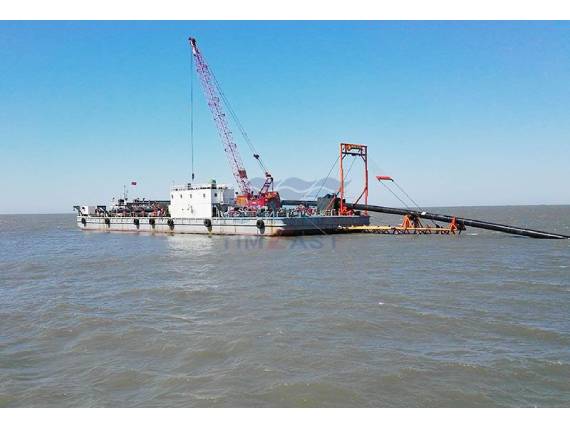The submarine optical cable is laid on the bottom of the sea with a wire
bundle wrapped in an insulating sheath. Seawater can prevent the interference of
external optical and magnetic waves, so the signal noise of the submarine cable
is relatively high; no time delay is felt in the communication of the submarine
optical cable. The design life of the submarine cable is 25 years of continuous
operation, and the satellite usually runs out of fuel within 10 to 15 years. The
basic structure of the submarine cable is: polyethylene layer, polyester resin
or asphalt layer, steel strand layer, aluminum waterproof layer, polycarbonate
layer, copper or aluminum tube, paraffin, alkane layer, fiber optic bundle,
etc.
The submarine optical cable system is mainly used to connect the optical
cable and the Internet, and it is divided into two parts: shore equipment and
underwater equipment. Onshore equipment packages and transmits communication
services such as voice, image, and data. Underwater equipment is responsible for
the processing, sending and receiving of communication signals. Underwater
equipment is divided into three parts: submarine cable, repeater and "branch
unit": submarine cable is the most important and the most vulnerable part.

Submarine Cable Repairing
The structure of the deep-sea optical cable is relatively complicated: the
optical fiber is set in a U-shaped groove plastic skeleton, and the groove is
filled with grease or an elastic plastic body to form a fiber core. The core is
wrapped with high-strength steel wire. During the winding process, all the gaps
are filled with waterproof material, and then a layer of copper tape is wrapped
around the wire and welded to make the steel wire and the copper tube form an
The combination of compression and tension. A layer of polyethylene sheath is
added to the outside of the steel wire and copper pipe. This tight multi-layer
structure is to protect the optical fiber, prevent breakage and prevent the
intrusion of seawater. In areas where sharks are infested, a polyethylene sheath
should be added outside the submarine cable.
The structure of the submarine optical cable requires strong and light
materials, but light metal aluminum cannot be used, because aluminum and
seawater will undergo an electrochemical reaction to generate hydrogen, and
hydrogen molecules will diffuse into the glass material of the optical fiber,
causing the loss of the optical fiber to increase. Therefore, the submarine
optical cable must prevent the generation of hydrogen inside, and at the same
time prevent the hydrogen from penetrating into the optical cable from the
outside. For this reason, in the early 1990s, an optical fiber coated with
carbon or titanium was developed to prevent the penetration of hydrogen and
prevent chemical corrosion. The optical fiber connector is also required to be
high-strength, and it is required to continue to maintain the strength of the
original fiber and the surface of the original fiber from damage.
Submarine Pipeline Laying Companies say that submarine cable breaks generally
have two major causes. One is force majeure such as earthquakes and tsunamis,
and the other is man-made causes. Once the cable is disconnected, it not only
has a huge impact on international communications, so the losses caused are even
more difficult to estimate. Submarine optical cables are usually buried 1 to 2
meters deep under the seabed. Because the seabed is not very regular, the
optical cables are sometimes exposed. Both the anchoring of a fishing boat and
the use of trawl nets may destroy the optical cable. Therefore, the place where
the optical cable passes through the seabed is zoned as a prohibited anchorage
area, and ships are not allowed to dock. This principle is the same as that of
optical cables on land. We often see such signs on the road as "There are
optical cables underground. Construction is prohibited." Submarine optical
cables need to be protected, and technology needs to be strengthened to improve
their own tensile strength. Submarine Cable Repairing need us. China Submarine Pipeline Laying is here waiting for you.
Note: If you found anything violating your copyright, please contact us, we would remove them as soon as possible.




